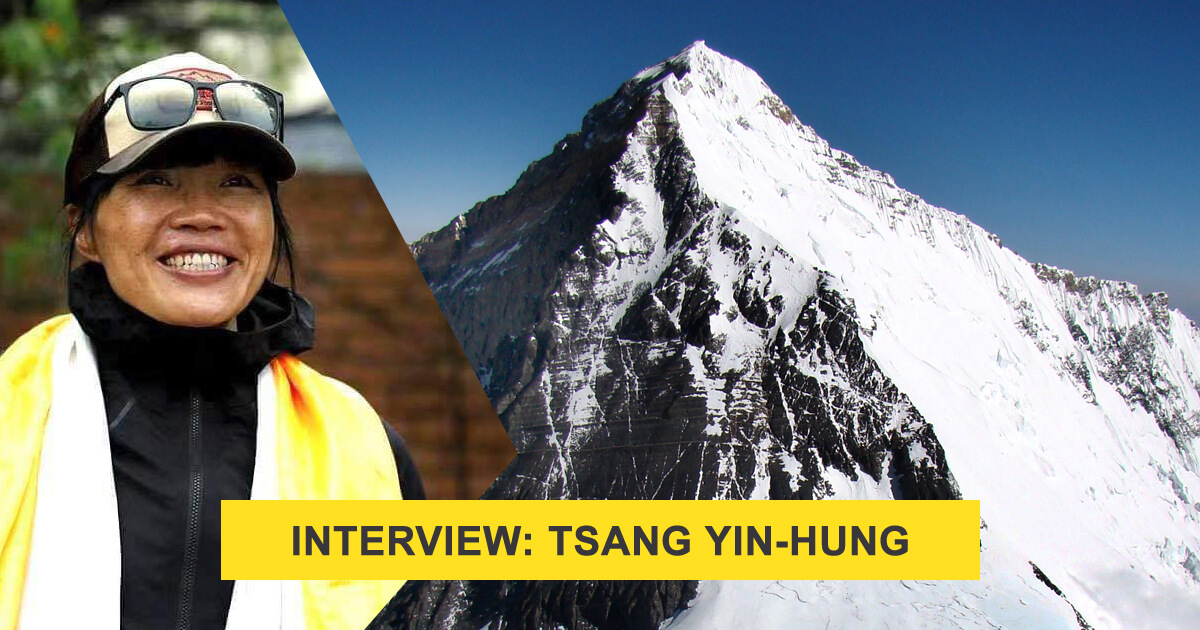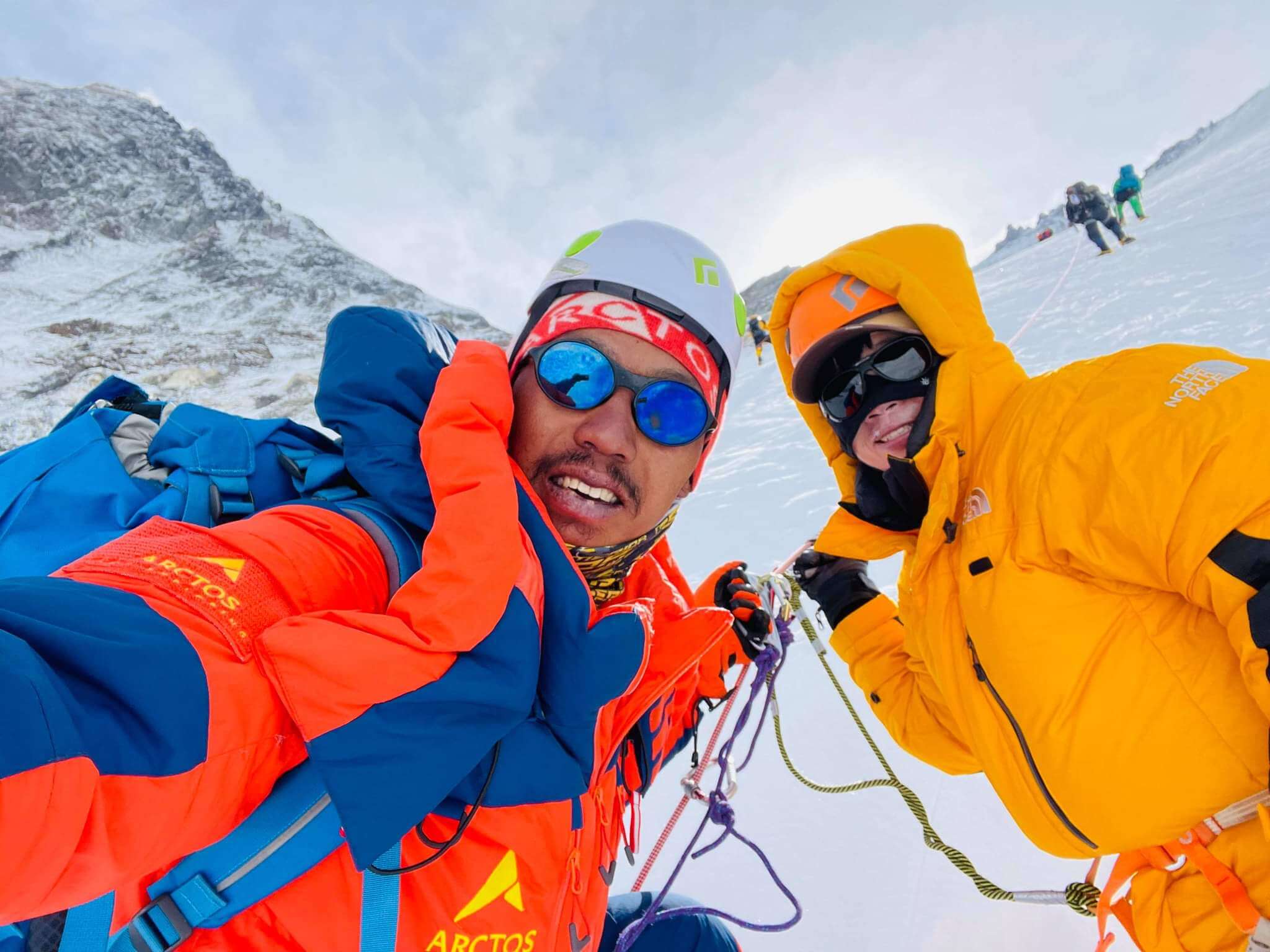I didn't look at record, just wanted to go for myself: Tsang Yin-hung, Fastest woman to summit Everest
44-year-old former teacher from Hong Kong, Ada Tsang Yin-hung has set a record as the fastest woman to summit Everest within 24 hours and 50 minutes on 23rd May. Liaison officer, appointed by the government of Nepal, Gyanendra Shreshtha confirmed Dream Wanderlust that she reached the summit at 3:10 p.m. leaving the Base Camp the day earlier at 1:20 p.m. She was supported by Pemba Sherpa.
According to the official data from the archives of Guinness World Records, before Ada, it was another Nepalese woman, Phunjo Jhangmu Lama, who set the earlier record in 39 hours and 6 minutes on 17th May, 2018.
In an exclusive interview upon her return to Kathmandu, Ada Tsang spent some time jawing with Dream Wanderlust earlier this month. "Chasing the pursuit of excellence could only be done through a speed climb to Everest," she held forth. It was also borne out by her that she chose to stay off the internet so that the much-talked-about covid outbreak at the Base Camp doesn't repel her speed climb. The full conversation is noted down below.

DW: Congratulations on your fastest ascent on Everest as a woman. You broke the record of Nepalese climber Phunjo Jhangmu Lama who did it in 39 hours, 6 minutes. How did you push yourself to achieve this feat within 25 hours, 50 minutes?
Ada Tsang: I didn't look at the record. I just wanted to go for myself. I have summited Everest twice earlier and I wanted to try the speed-climb this time. And I believe that it was done within quite a decent time.
DW: You became the first woman from Hong Kong to climb Everest in 2017. What was your objective this time to climb the same peak again?
Ada Tsang: Yes, a lot of people have asked me why did this again. All other times, I had different missions to fulfill. I really like to do something in the perfect way possible. I like to challenge myself. Chasing the pursuit of excellence could only be done through a speed climb to Everest.
I am not saying I always like the challenge because mountains always teach me to be humble. I never challenge the mountain but myself to see how far and high I can go. So, I know that even though I cannot achieve success, I go very far and close to it.
DW: On 22nd May, you started from Everest Base Camp at 1:20 p.m. Were you determined from the beginning to climb nonstop until you reached the summit?
Ada Tsang: I have trained myself to run in the mountains for more than ten years and I have trained myself in such a way that even if I run 100 kilometres, even 100 miles for that matter, I wouldn't stop. The real rest you take once you reach the finish line or the destination. So, starting from the Base Camp, I did not plan to stop at all. Only at Camp-2 to change my downsuit and at Camp-4 for a new pair of socks.
I had reached Nepal very early in March. During that time, covid-19 was under control. There were few individual cases. Meanwhile, where I was staying for a month before Base Camp, had no network. I hardly knew anything what was going on outside about covid-19. And when I reached the Base Camp and started climbing, I did not pay attention to the mass media. Because I did not want to get distracted from my mission.
I know, at that time, a lot of people at the Base Camp had circulated a lot of news about covid-19 outbreaks. I chose not to access the internet at that time. I really focused on my training and I stuck to my team instead of anything else. I only stayed in our own camp with my teammates to stay away from other teams.
Anyway, it was really good because it was good for my training, and later, the summit. And it's not the easiest since there was a lot of uncertainty and unexpected things that we had to keep in anticipation. Anything could go wrong. We have to make sure that we had a guaranteed solution for everything that could go wrong.


DW: Nepal government has issued 408 permits to the foreign nationals this Spring. Many climbers retreated from their expeditions due to the unavoidable outbreak of covid-19 at the Base Camp. Did you, at any point, ever consider abandoning your attempt?
Ada Tsang: I never thought of abandoning my attempt.
DW: What other challenges did you face for this speed-climb apart from the narrow weather window and heavy snowfall?
Ada Tsang: In my opinion, narrow window was not any problem. The biggest problem lies in the accuracy of the weather report. This year it was extremely uncertain. In the beginning, weather forecast suggested only 3 days in May. 10th to 12th. I started on 11th May. When I reached balcony on the second day in the morning, it became really windy. It was at least 65km per hour. We felt it is going to stop. Maybe within a short period of time. We kept moving up as we trusted the weather report. We went to the South summit in next 2 hours at 8750m. That point of time, the snow storm was extremely deadly. We had no choice except abandoning.
It was quite a big challenge for our team. Because for one summit push from Camp-2, we have to spend a lot of energy. Our whole team was on the go and the snow storm lasted at least 24 hours. We suffered a lot during that period. We could hardly eat and sleep. We also had to make sure we have some energy left to descend back. Our team was quite weak after we returned. I was only thinking how to recover as soon as possible.
On our second summit push, again, weather forecast was the challenge. It changes so much in no time. For a while, the weather forecast suggested us to aim within 19th to 22nd May.
DW: It took you four attempts and seven years to become the fastest woman on Everest since your first attempt in 2014. At the age of 44, how do you look back at your journey from being a former teacher to achieving the fastest ascent on Everest as a woman?
Ada Tsang: I just want to tell the youngsters that whenever you form a big dream, you have to prepare yourself for a bigger challenge. So, having a challenge is normal. It is only when you're young and encounter challenge, you have to stay away from excuses.
I always tell my students to aim high and achieve higher. So, for the past seven years, I believe that if you work hard, you will get very close to your dream.
DW. Would you open up about your next plan? Any plan for speed climbing on other 8Ks?
Ada Tsang: I have done different speed races. I don't want to think too much right now. What I want to do is get back to my work. I really really miss my amazing team.

2017: On the top of Everest

2021: On the top of Everest

2021: On the top of Everest

2021: On the top of Everest
Photo Courtesy: Ada Tsang Yin-hung






